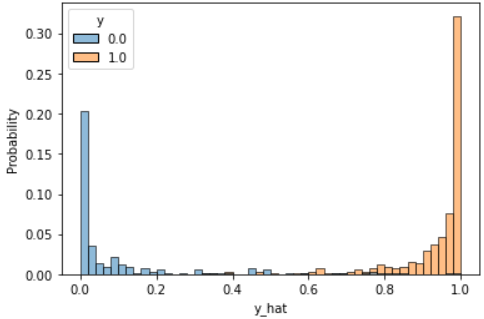◾PYTORCH 기초
PyTorch : Python을 위한 오픈소스 머신 러닝 라이브러리
import torch
x = 3.5
y = (x-1) * (x-2) * (x-3)
print(x, y)

- torch 코드
- 계산을 위한 값을
torch.tensor로 선언한다.
requires_grad = True 옵션으로 기울기를 찾을 수 있다.
x = torch.tensor(3.5, requires_grad=True)
y = (x-1) * (x-2) * (x-3)
print(x, y)

기울기 찾기
y.backward()
x.grad

a = torch.tensor(2.0, requires_grad=True)
b = torch.tensor(1.0, requires_grad=True)
x = 2*a + 3*b
y = 5*a*a + 3*b*b*b
z = 2*x + 3*y
z.backward()
a.grad

◾보스톤 집값 예측
- 데이터 준비
import pandas as pd
import seaborn as sns
import matplotlib.pyplot as plt
from sklearn.datasets import load_boston
boston = load_boston()
print(boston.DESCR)

df = pd.DataFrame(boston.data, columns = boston.feature_names)
df['TARGET'] = boston.target
df.tail()

- torch 모듈
import torch
import torch.nn as nn
import torch.nn.functional as F
import torch.optim as optim
- 데이터 분리
cols = ["TARGET", "INDUS", "RM", "LSTAT", "NOX", "DIS"]
data = torch.from_numpy(df[cols].values).float()
data.shape

data

y = data[:, :1]
x = data[:, 1:]
print(x.shape, y.shape)

n_epochs = 2000
learning_rate = 1e-3
print_interval = 100
- 모델 수립
model = nn.Linear(x.size(-1), y.size(-1))
model

optimizer = optim.SGD(model.parameters(), lr=learning_rate)
- 학습 시작
- tensorflow와 달리 for문을 통해 직접 진행한다.
for i in range(n_epochs):
y_hat = model(x)
loss = F.mse_loss(y_hat, y)
optimizer.zero_grad()
loss.backward()
optimizer.step()
if (i + 1) % print_interval == 0:
print('Epoch %d: loss = %.4e' % (i+1, loss))
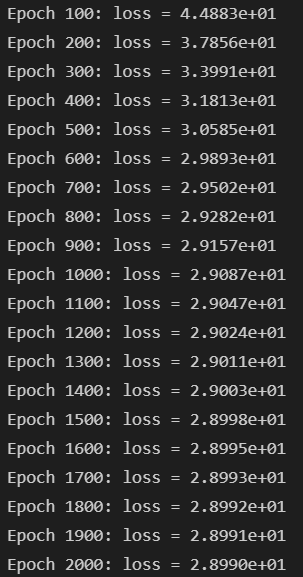
df = pd.DataFrame(torch.cat([y, y_hat], dim=1).detach_().numpy(),
columns=["y", "y_hat"])
sns.pairplot(df, height=5)
plt.show()
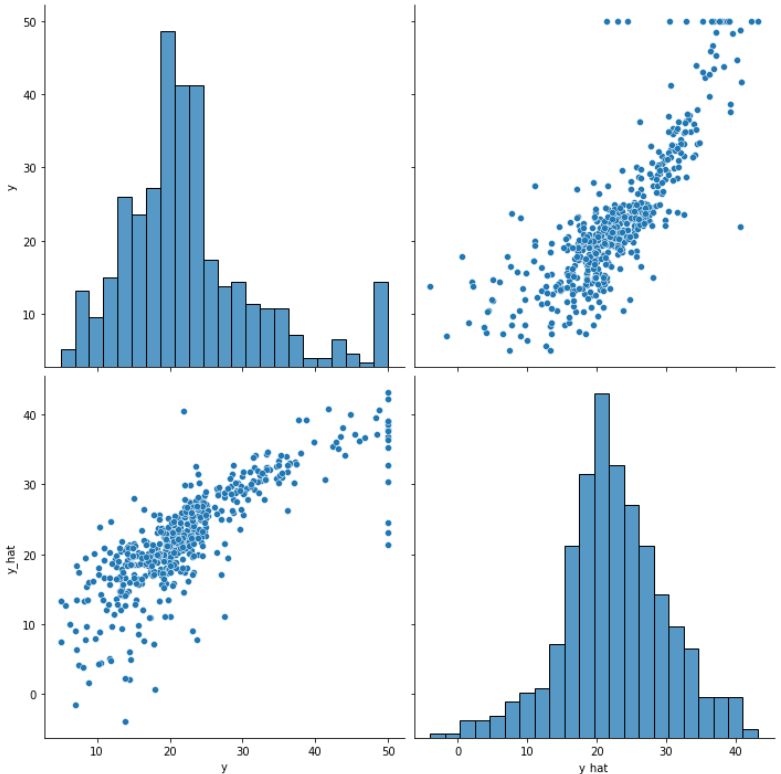
◾유방암 예측
- 데이터 준비
import pandas as pd
import seaborn as sns
import matplotlib.pyplot as plt
from sklearn.datasets import load_breast_cancer
cancer = load_breast_cancer()
print(cancer.DESCR)

df = pd.DataFrame(cancer.data, columns = cancer.feature_names)
df['class'] = cancer.target
df.tail()

cols = ["mean radius", "mean texture", "mean smoothness", 'mean compactness',
'mean concave points', 'worst radius', 'worst texture', 'worst smoothness',
'worst compactness', 'worst concave points', 'class']
for c in cols[:-1]:
sns.histplot(df, x=c, hue=cols[-1], bins=50, stat='probability')
plt.show()
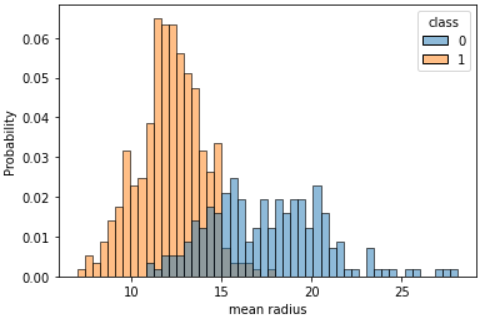
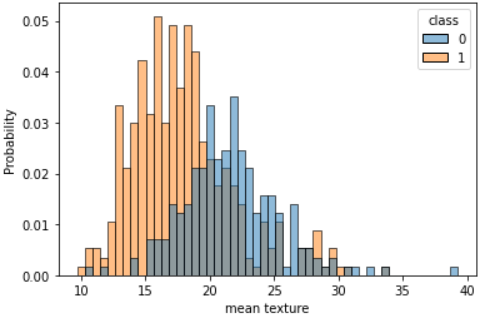

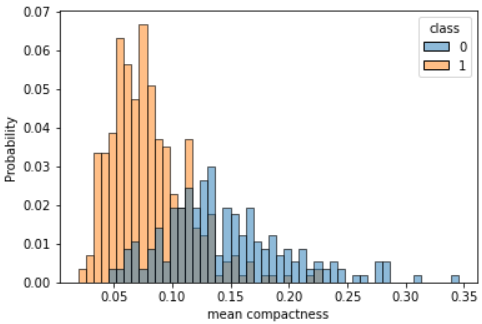
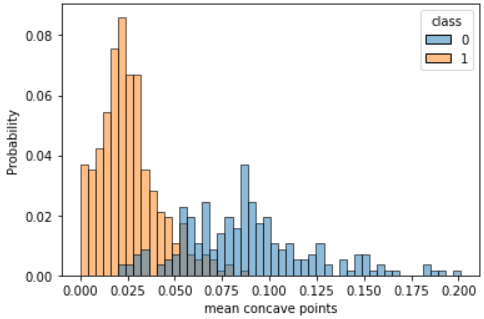
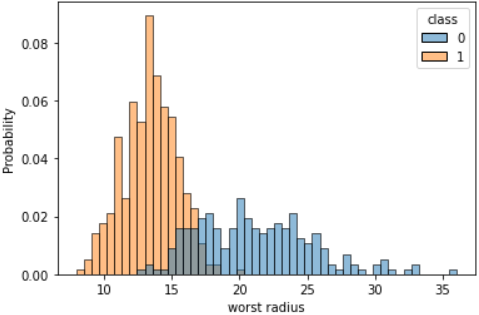
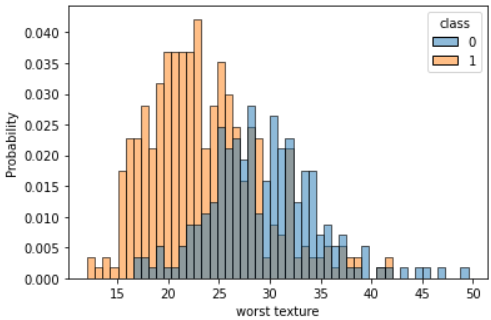
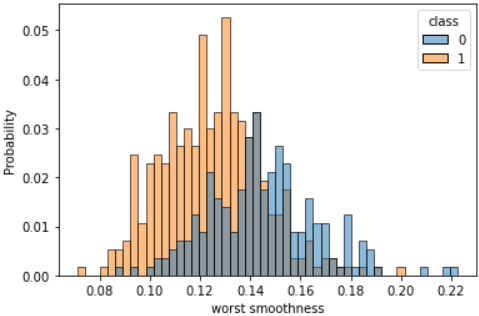

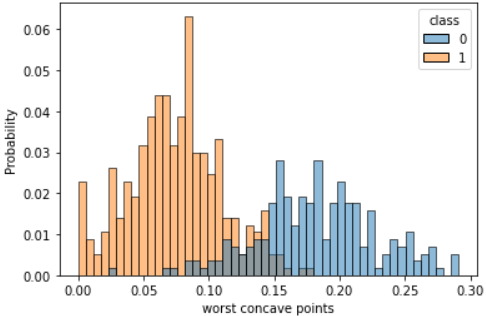
- torch 모듈
import torch
import torch.nn as nn
import torch.nn.functional as F
import torch.optim as optim
- 데이터 분리
data = torch.from_numpy(df[cols].values).float()
data.shape

data

x = data[:, :-1]
y = data[:, -1:]
print(x.shape, y.shape)

n_epochs = 200000
learning_rate = 1e-2
print_interval = 10000
- 모델 수립
class MyModel(nn.Module):
def __init__(self, input_dim, output_dim):
self.input_dim = input_dim
self.output_dim = output_dim
super().__init__()
self.linear = nn.Linear(input_dim, output_dim)
self.act = nn.Sigmoid()
def forward(self, x):
y = self.act(self.linear(x))
return y
model = MyModel(input_dim=x.size(-1), output_dim=y.size(-1))
crit = nn.BCELoss()
optimizer = optim.SGD(model.parameters(), lr=learning_rate)
- 학습 시작
for i in range(n_epochs):
y_hat = model(x)
loss = crit(y_hat, y)
optimizer.zero_grad()
loss.backward()
optimizer.step()
if (i + 1) % print_interval == 0:
print('Epoch %d: loss = %.4e' % (i+1, loss))
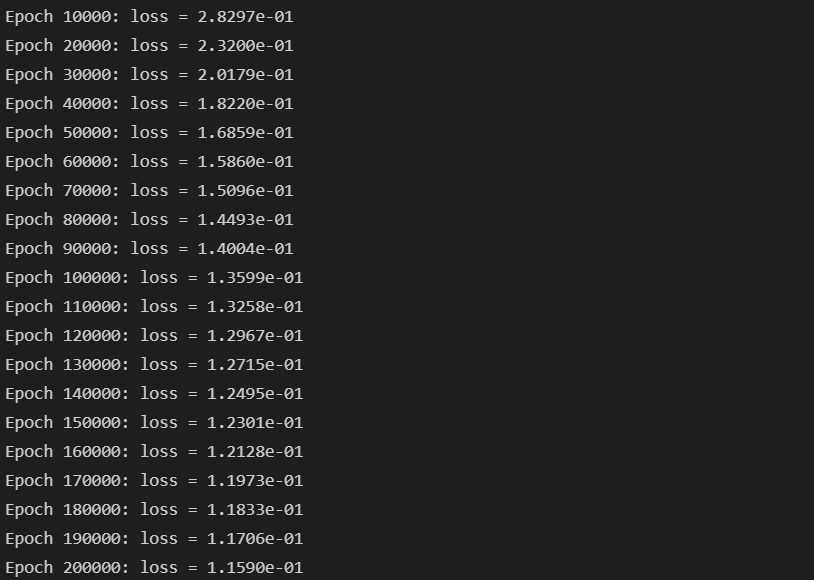
- acc 계산
- 출력으로 sigmoid를 사용했으므로 값으 0 ~ 1 사이를 지닌다.
- 0.5보다 클 경우를 1, 작을 경우를 0으로 바꾸어 실제 값과 비교한다.
- 맞춘 결과과 실제 크기로 Acc를 구한다.
correct_cnt = (y == (y_hat > .5)).sum()
total_cnt = float(y.size(0))
print('Accuracy : %.4f' % (correct_cnt / total_cnt))

df = pd.DataFrame(torch.cat([y, y_hat], dim=1).detach().numpy(),
columns=["y", "y_hat"])
sns.histplot(df, x='y_hat', hue='y', bins=50, stat='probability')
plt.show()
